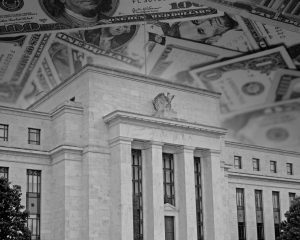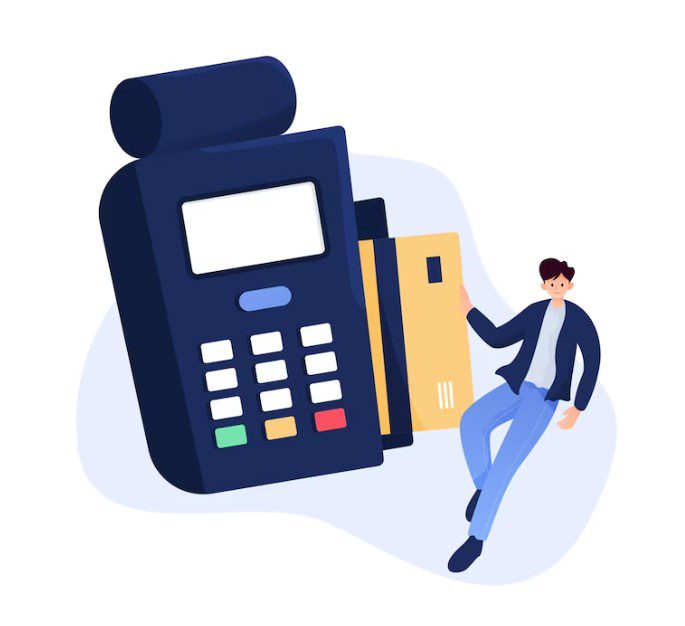In this article, we’ll take a close look at interest rates, what they mean, how they can change, and why they matter so much in our money world.
Explaining the Basics of Interest Rates: A Simple Guide

Rates are like the price tag on money. They affect how much it costs to borrow money or how much you earn when you lend your money to someone else.
What Are Interest Rates?
Think of rates as the cost of borrowing or the reward for lending. Imagine you lend your friend some money, and they promise to give it back after a while with a little extra as a thank-you.
That extra bit is the interest. Interest rates are usually shown as a percentage, like 5% or 8%. They show how much extra you’ll get if you lend money or how much you’ll have to pay if you borrow.
Different Kinds of Interest Rates
There are different types of rates. Let’s take a look at a few:
1. Regular Interest Rate:
This is the normal interest rate you see on loans or savings accounts. It doesn’t take into account a few tricky things we’ll talk about later.
2. Real Interest Rate:
This is the real deal. It considers something called “inflation,” which makes your money worth less over time. So, the real rate tells you how much your money is growing after taking away the effects of rising prices.
3. Special Rates:
Sometimes, banks have special rates for their best customers. They might call it the “prime rate.” It’s like a VIP rate for people who are really good at managing their money.
Why Do Interest Rates Change?
Think of interest rates as a thermometer for the economy. When the economy is too hot, interest rates might go up. When it’s too cold, they might go down. Here’s why:
1. Inflation:
If prices are going up too fast (inflation), interest rates might rise to cool things down. It’s like putting the brakes on spending.
2. Big Boss Banks:
The main bank in the country (it’s often called the central bank) has the power to change rates. When they want people to spend more, they might lower rates. When they want people to spend less, they might raise rates.
3. Lots of Borrowing:
When many people and businesses want to borrow money, the demand goes up. So, to make borrowing a bit more expensive and slow things down, interest rates can go up too.
Why Should You Care About Interest Rates?
Rates might sound like something only grown-ups talk about, but they affect everyone. Here’s why they matter:
1. Buying and Borrowing:
When interest rates go up, borrowing money gets pricier. That means if you want a loan for a car or a house, you might have to pay more every month.
2. Your Savings:
If you’re saving money in a bank, higher interest rates can mean more money in your account over time. You earn a bit more on what you saved.
3. Jobs and Economy:
I.R can even influence how many jobs there are and how well the economy is doing. When rates are low, people tend to spend more, and businesses grow, creating more jobs.
4. Investing:
This is where “mutual funds” come in. Mutual funds are like a team of people who take care of your money and invest it in different things. When rates are high, you might hear people talking more about mutual funds because they can be a smart way to make your money grow.
Imagine you and a bunch of friends putting your money together in a pot. Then, a skilled person uses that money to buy different things, like slices of many different companies or pieces of loans. This is what mutual funds do, but with grown-ups and a lot more money.
In a Nutshell interest rates are like the way money talks to us. They tell us how much we’ll pay or earn when we borrow or lend. They’re influenced by things like how fast prices are going up, the big boss banks, and how much people want to borrow.
Interest rates matter to everyone. They can make borrowing cost more or less, affect our savings, and even change how many jobs there are. Plus, they’re buddies with mutual funds, which help our money grow without needing a magic wand.
So, now you know a bit more about the secret language of money – interest rates!
How Changes in Interest Rates Affect Us: A Closer Look

Imagine interest rates as the switches that control the cost of borrowing money and the rewards for saving it. In this article, we’re going to dive into what happens when these rates change. We’ll see how they influence borrowing, how they’re connected to prices, and how they touch everything from your pocket to your investments.
What Happens When Interest Rates Change
Think of interest rates as traffic lights for borrowing and lending. When rates go up, it’s like the red light telling you to stop and think before you borrow. This means loans for things like cars or homes become more expensive. For businesses, borrowing money for expansions might not seem like a good idea either.
When rates drop, it’s like the green light saying, “Go ahead and borrow!” People might think about refinancing their home loans to save money, and businesses might want to borrow for cool new projects. This can lead to more spending and growing.
Interest Rates and How Stuff Costs
Interest rates and something called “inflation” are buddies. Inflation makes things cost more over time. Think of your favorite snack costing a little more each year. Interest rates can help control this. When rates go up, people and businesses might borrow less and spend less. This can slow down inflation. When rates drop, borrowing becomes cheaper, which can make people spend more. But if everyone spends too much, prices can go up quickly.
How Interest Rates Affect You
Interest rates aren’t just numbers for grown-ups. They have a big impact on everyone’s lives:
1. Loans and Borrowing:
When rates go up, borrowing money can get expensive. This means loans for college, cars, or homes might cost more. But when rates drop, loans become cheaper, which can be good news if you need to borrow.
2. Your Savings:
If you’re saving money in a bank, interest rates can change how much money you make. When rates go up, banks might pay you more for keeping your money with them. When rates drop, the money you earn from savings might not be as much.
3. Jobs and the Economy:
Interest rates can also affect jobs and the economy. When rates are low, people tend to spend more. This can make businesses grow and create more jobs. But if rates rise too much, spending might slow down, and businesses might not grow as fast.
Using Mutual Funds to Navigate Interest Rate Changes
In the midst of these interest rate changes, mutual funds can be like life vests. They offer a mix of different things to keep your money safe and growing. Here’s how they can help:
1. Bonding with Bond Mutual Funds:
If you like safety, bond mutual funds can be your pals. When interest rates rise, bond prices might drop, but bond funds can still offer stability. They invest in a variety of bonds, which can balance out the impact of rising rates.
2. Finding Friends in Stock Mutual Funds:
If you’re open to some adventure, stock mutual funds might be for you. Stocks can be tricky with interest rates, but some mutual funds have experts who know how to manage the ups and downs. They can help you ride the waves.
3. Being Smart About Choices:
When choosing mutual funds, think about your goals. Do you want steady growth or are you okay with some ups and downs? It’s like picking between your favorite ice cream flavors.
Interest rates are like the weather of the money world. They control how much it costs to borrow and how much you earn from saving. They’re linked to prices and even influence jobs and the economy.
For regular people like us, interest rates impact our loans, savings, and spending. And they’re connected to mutual funds, which can be your guides through the changing financial landscape. So, next time you hear about interest rates, remember they’re like the quiet conductors of the money orchestra, affecting every note from your pocket to your investments.
Central Banks and How They Control Money with Interest Rates

Imagine central banks as the protectors of money and the economy. They have a special tool called interest rates that they use like a steering wheel to guide the economy. In this article, we’ll dive into the world of central banks and their fascinating dance with interest rates. We’ll also see how this affects everyday things like mutual funds and our wallets.
What Do Central Banks Do?
Central banks are like the superheroes of money. They’re in charge of money stuff in a country. They look after the currency, make sure banks follow the rules, and do something called “monetary policy.” This policy is like a plan to help the economy stay healthy.
One of the big tools central banks use is interest rates. These are like the volume knobs for money. Central banks turn them up or down to control how much money is moving around.
Interest Rates: The Economy’s Remote Control
Central banks use interest rates for a few important reasons:
1. Fighting Inflation:
Inflation is when stuff gets more expensive over time. Central banks raise interest rates to slow down spending. When borrowing money is pricier, people and businesses spend less, and prices stay under control.
2. Boosting the Economy:
When things are slow and people aren’t spending enough, central banks lower interest rates. This makes borrowing money cheaper, so people buy more things and businesses grow.
3. Keeping Things Steady:
Central banks use interest rates to make sure the economy doesn’t go too fast or too slow. It’s like they’re the drivers of a car, keeping a steady pace on the road.
How Central Banks Affect You and Mutual Funds

Central banks and their interest rate moves affect you more than you might think. Let’s see how:
1. Your Savings and Loans:
When central banks lower interest rates, borrowing money becomes cheaper. If you’re thinking of getting a loan for a car or a house, your payments might be lower. But when central banks raise rates, borrowing gets a bit more expensive.
2. Mutual Funds and Investments:
Mutual funds are like a team of money experts who help grow your cash. When interest rates are low, regular savings accounts don’t earn much. That’s when mutual funds can shine. They offer a chance for better growth because they invest in lots of things.
When the 2008 Crisis Hit
Remember the big money crisis in 2008? Central banks played a huge role then. They had to make sure everything didn’t fall apart. The United States Federal Reserve, the big bank in the U.S., did some big things.
They lowered interest rates a lot and did something called “quantitative easing.” This meant they added money to the economy to keep things going.
During this time, interest rates were super low. So, regular savings accounts didn’t give much back. People started looking for other ways to make their money grow. Mutual funds became popular because they could offer better returns.
Central Banks Need to Balance
Central banks have a tough job. They need to balance things just right. If interest rates are low for too long, people might borrow too much and things could get risky. But if rates go up too quickly, spending might slow down too much.
Central banks need to watch out for these things while making their decisions. And while they do that, you and your money feel the effects.
See Also: Interest Rates : The Best Interpretation In 2023
Conclusion
Central banks and interest rates might sound complicated, but they’re really like the remote control for the economy. They help keep money moving at the right pace.
Interest rates matter to you in a big way. They can change how much you pay for loans or earn on your savings. They even affect mutual funds and other investments.
So, next time you hear about central banks or interest rates, you’ll know they’re like the conductors of an economic orchestra, making sure the music of money plays just right.
We Hope you’ve learned a lot from this article!! We’re glad you did.
Join our telegram community to get up-to-date news, educational materials, free online classes, market analysis, and crypto futures trade signals that will help you grow and become profitable.


